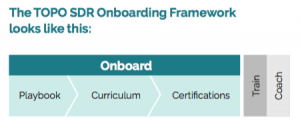Twenty years ago the overriding philosophy was that team strength, performance and resilience came from a homogeneous, assimilated group of people that worked together like a well oiled machine. Leaders left jobs and took their best and most loyal team members (as well as clients) with them to perform the same trick in a new organisation.
Although in some markets such as financial services this philosophy is often still practiced, the only constant in current markets is rapid change. Where the technology revolution has enabled twenty people start ups to completely upset an industry (think AirBnB) the worst thing you can do is to bring together a leadership team that think, talks, leads and acts the same.
So I’m going to assume that I don’t have to make a case about the power of diversity, complimentary strengths, diversity of views, beliefs and ways of working. I feel many leaders are struggling to lead, to get the best out of diverse teams. In some cases they sentimentally look back at the past and think about how easy it was to lead people who thought, felt and acted alike.
So how do you get the best out of a group of people, who if it wasn’t for your company and the fact that they have to work as a team wouldn’t even have a drink together? Here are my top 6 suggestions:
1. Intent, Intent and Intent
The starting point has to be your personal intent. You have to be convinced that a team with diversity is better for your end result. If you’re not convinced don’t bother and just hire your buddies. You have to commit yourself to investing your time and energy to bring the team together. You have to be ready to get frustrated and be on the verge of throwing in the towel. You have to be willing to bite your tongue, accept that other people will do things differently and above all learn from and be tolerant towards others.
2. Share the Passion
I have to ‘earn a salary’ or this job is ‘good for my career’ isn’t a strong enough motivation to hold together a team that argues, has different interest and ways of doing things. As a leader you have to find the ‘glue’ that holds the team together. It makes them answer the question:
Why do I want to work with this amazing individual even though I know we’d never be buddies?
In sports and arts, it’s easy. It’s about the competition, about winning or delivering a performance. Even with project teams, it’s easier because there’s a clear deadline, deliverables and an ‘end to the madness’. However with leadership teams, there is no end. There is only a continuum. As a leader you have to get the team to passionately believe in what you’re trying to achieve.
3. Take a Personal Deep Dive
I strongly believe that to become a high performing team it’s paramount for people to get to know each other better. You’re much more willing to do something extraordinary for people that you know, for people that give something to you and for people that you share a dream with. Invest as a team to ‘get to know’ each other better. My first real team experience was when I was part of the team leading my university fraternity for a year. The praeses Henk Jan Peterse decided to take us for a week into the wilderness and spend 7 days just living together. I promise you that you get to know a lot of things about people when you eat, sleep, talk, work, drink, play and have fun together for 7 intense days.
4. Agree How You Want to Work Together
Often leaders assume that people know how they need to work together, how we make decisions, and how we support each other. It’s simply not true. I do this for a living and I know for a fact that when you ask individual team members to write down how they’re working or should work together the answers that you get are completely different. So take your team out, ask them to share what they expect from other team members. Ask them to share what other team members can expect from them. Discuss what is working in the team, what you should improve and what frustrates the hell out of people. Start putting together your team’s rules of engagement.
5. Get the Best Out of Conflict
One of the key elements of the ‘rules of engagement’ should be how you as a team deals with conflict. Get the team first to accept that constructive conflict, not personal attacks, is better for the team. What kind of conflict is accepted, what behavior is not and how you will resolve issues in the team.
6. Have fun
Although the aim of a team is not to become best buddies you must have fun when you work. It’s important for a diverse team to have fun, unwind, vent, get energy out and use the power of laughter to re-energize, re-wind, re-commit and re-learn. Just think about the last time you worked without having any fun at all (we’ve all had these moments) – you may have gotten work done but it probably wasn’t a rewarding experience at all. You have to find the right balance of emotions and fun is definitely part of the mix.
We all will work with people we don’t necessarily like as friends. But to be a successful leadership team you have to reach a point where you can respect where each of you is coming from and at least enjoy each other’s company in the workplace. The longer you have to work together the more important this is.
Business & Finance Articles on Business 2 Community(20)






